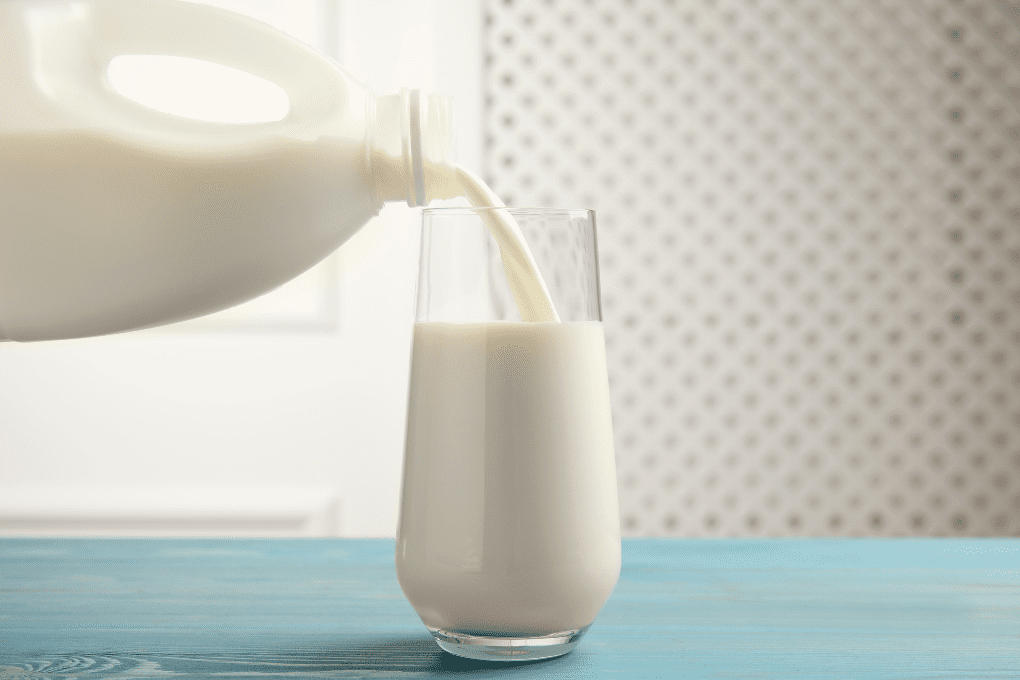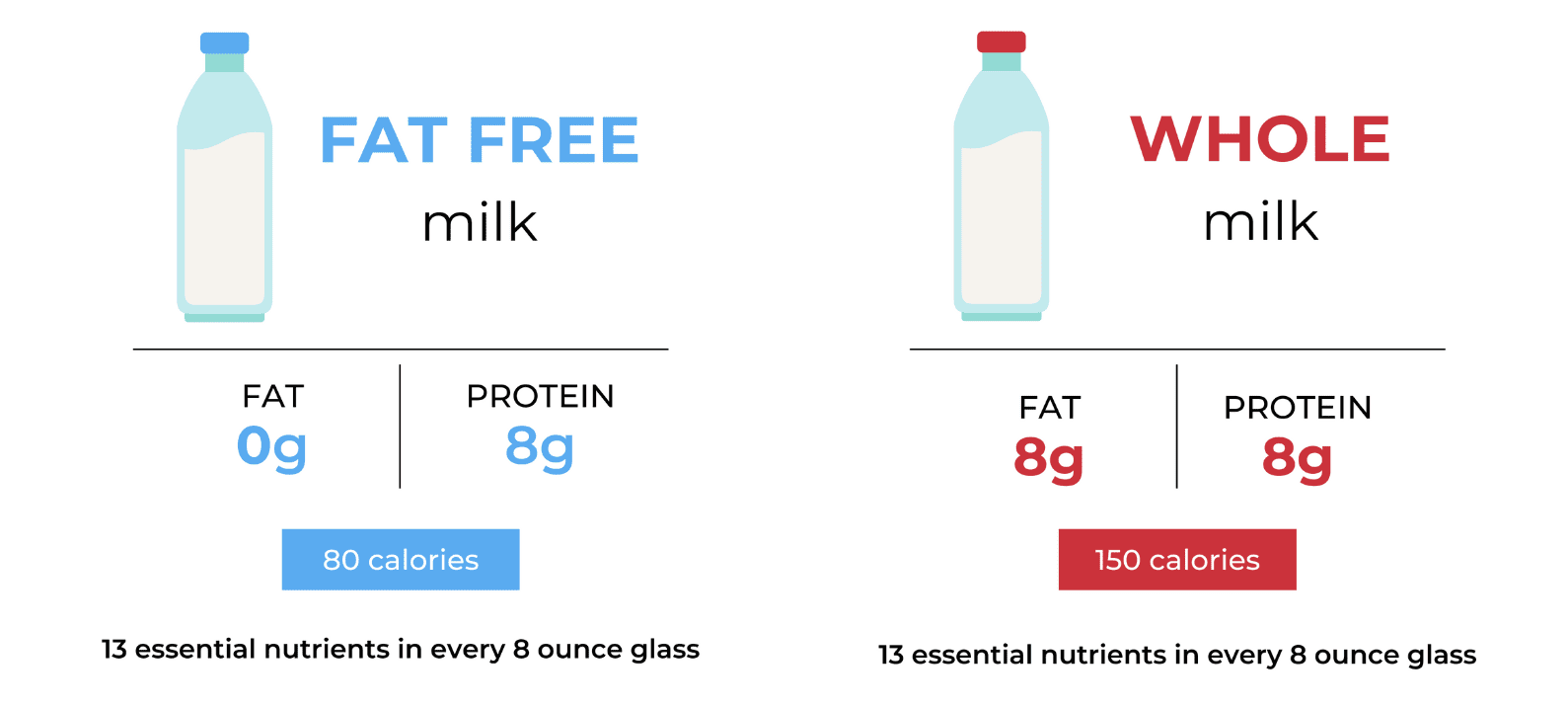
Milk is an important (and delicious) part of a nutritious and balanced diet. Every serving of milk provides vitamins, minerals, protein, and energy that help Americans meet their nutrient needs.
The dairy aisle is packed with milk options to meet people’s health, taste, and cooking needs. The primary types of milk available are whole milk (3.25% milk fat), reduced-fat milk (2%), low-fat milk (1%) and fat-free milk, also known as skim milk. Many people have questions about the differences between the types of milk and whether they should choose fat-free milk or whole milk.
This article will dive into differences and similarities between fat-free milk nutrition and whole milk nutrition to help you decide the best option for your lifestyle and health.
Fat-Free vs Whole Milk: What’s the Difference?
There are many different types of milk available in the dairy aisle, but all cow’s milk, whether fat-free milk, whole milk or lactose-free, is packed with 13 essential nutrients, including 8 grams of high-quality protein. Milk can vary, however, by percentage of milkfat, or the amount of fat that is in the milk by weight. These percentages are noted on the package and by the different cap color. Fat-free milk is literally fat free, containing 0% milkfat by weight. Whole milk, on the other hand, contains 3.25% milkfat by weight and is most like its original state when it comes from the cow. The calorie differences between the two are due to their differing fat content.

Fat-Free Milk Nutrition
Fat-free milk provides 13 essential nutrients in each serving including: protein, calcium, phosphorus, vitamins A and D and four B vitamins—B12, riboflavin, pantothenic acid and niacin. Each 8-ounce glass of fat-free milk contains 80 calories, 0g of fat, and 8g of high-quality protein. During processing, all the cream is removed before fat-free milk is bottled. Fat-free milk is still 100 percent real milk; no water or extra carbs or sugar are added.
Fat-free milk is a great option for someone looking to reduce calories or fat in their diet but not looking to sacrifice nutrition. For example, an 8-ounce serving of milk provides as much calcium as 10 cups of raw spinach.
Nutrition guidelines recommend low-fat or fat-free dairy products as part of a healthy dietary pattern. According to the 2020-2025 Dietary Guidelines for Americans (DGAs), about 90 percent of the U.S. population does not meet dairy recommendations and most individuals would benefit from increasing their intake of fat-free or low-fat dairy.
Whole Milk Nutrition
Whole milk provides the same 13 essential nutrients as fat-free milk, and each 8-ounce glass contains 150 calories, 8g of fat, and 8g of high-quality protein. The nutrients in milk help to build and maintain healthy bones, maintain a healthy immune system, support heart health, and more.
While the DGAs recommends choosing low-fat or fat-free dairy foods, emerging evidence suggests that full fat dairy foods can fit within healthy eating patterns. Research on dairy foods and heart health have shown a neutral or beneficial association with cardiovascular disease risk with consumption of all fat levels of dairy foods. Research also indicates a neutral or beneficial effect of dairy fat consumption on blood pressure and that full-fat dairy consumption does not adversely affect blood lipids.
Additionally, the DGAs recommend limiting intake of saturated fat to no more than 10% of calories per day, so full-fat dairy foods, like whole milk, can fit into a healthy eating pattern within saturated fat intake limits. Whole milk can be a great choice for people looking for a creamier milk to fit into their balanced diet. Whole milk is also the preferred milk of choice for baristas when making lattes due to its excellent frothing capabilities and flavor.
Final Thoughts
Whether fat-free or whole, milk plays an important role in a healthy diet. Every glass of milk provides 13 essential nutrients important to a healthy lifestyle. While current nutrition guidelines recommend fat-free or low-fat dairy, research continues to suggest that full fat-dairy, like whole milk, can fit into a healthy eating pattern. So, whether you choose fat-free or whole milk (or something in-between), you can feel good about your milk of choice.
Have more questions and dairy and milk nutrition? Visit New England Dairy’s Dairy and Your Health page to learn more about dairy’s role in a healthy diet. Learn about the hard-working farm families and their sustainability practices behind your favorite glass of milk.



